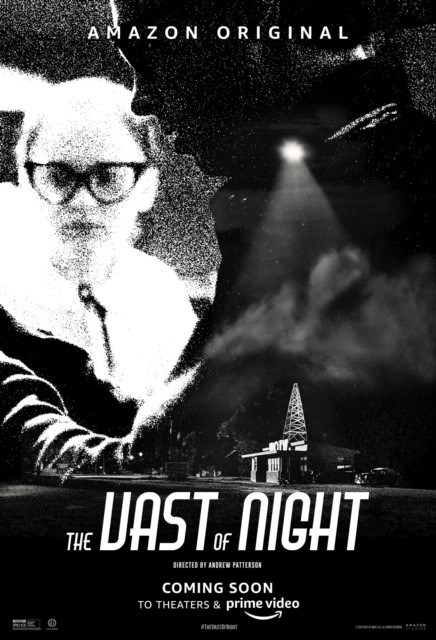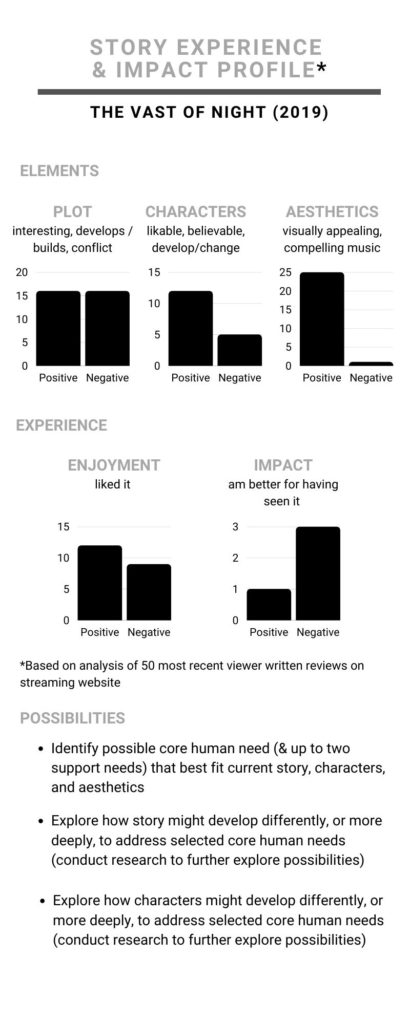I go out walkin’ after midnight
“Walkin’ After Midnight” (1957) Patsy Cline
Out in the moonlight
Just like we used to do, I’m always walkin’
After midnight, searchin’ for you
A few days ago I watched the relatively new film THE VAST OF NIGHT (2019) streaming on Amazon and felt it was a perfect film to use as a test case for our model of story engagement and impact and how stories might be strengthened by research and development around the model’s principles.
For those unfamiliar with it, THE VAST OF NIGHT is an independent science fiction film about a curious young telephone switchboard operator and a local radio disc jockey in a small town back in the 1950s who search for the source of a mysterious audio frequency they hear.

Audience reviews of the film have been fairly mixed. On Rotten Tomatoes, it currently has a score of 64% positive (see site), and on the Amazon site itself it has a current rating of 3.4 out of 5 stars (see site).
I wanted to better understand why viewers as a whole had such a tepid response to the film, so I analyzed a sample of 50 written reviews and grouped my findings below.

As a whole, viewers tended to be impressed with the aesthetics of the film, its visual and sound elements, especially given its likely lower production budget but had mixed reactions to the plot and characters. Several thought the plot was too slow and didn’t really build. Similarly, several thought the characters, while generally likable, didn’t really develop or show much depth. Overall, a few more reported enjoying the film than did not enjoying it.
In terms of the film’s perceived impact on them, only 4 of the 50 included references to this in their comments (this lack of reported impact feedback in reviews will be the subject of a future post). Only one indicated the film will have any lasting impact on them (would “keep thinking” about it), whereas the other three essentially gave some version of the comment that it was “forgettable” (reviewer comment). Further, I don’t recall any of the reviewers mentioning anything about finding the plot or characters relevant to their own lives.
My own experience with THE VAST OF NIGHT was similar to the overall reaction of the reviews I read. Stylistically, I thought the film was fantastic. It felt like 1950s small town, and the mood was mysterious and intriguing. Like the protagonists, I was curious to learn what the sound was.
However, the film otherwise felt empty to me, similar to the “forgettable” term used by the one online reviewer. While I was curious to see how it ended, I didn’t connect in any meaningful way with the characters or really know what I wanted for them (or for me vicariously).
What the film lacked, to refer back to the model of story engagement and impact model I’ve referenced in earlier posts, is a set of core human needs around which to center and more fully develop its plot and characters. Beyond searching for the source of their mysterious sound, the film needed to address things audience members can relate to on a deeper level such as searching for meaning beyond themselves, or searching for community or love, or searching for courage to fight against dark forces that might do them or their loved ones harm.
In my next post I’ll explore what a reimagined THE VAST OF NIGHT might look like that builds upon its strengths (e.g., the aesthetics, likable characters, interesting plot) but introduces more aspects to connect and impact.

Leave a Comment